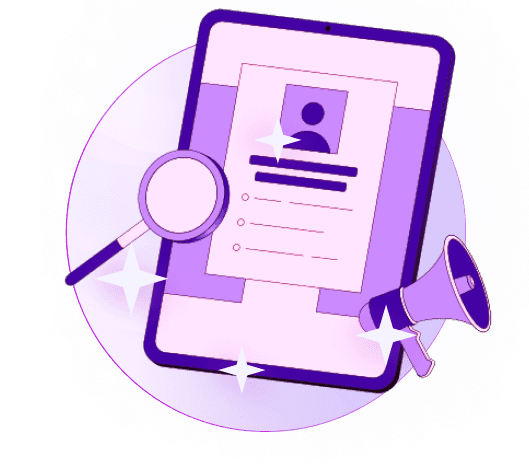Blogs
Articles

How to Personalize Your Cold Emails for Maximum Impact
Cold emailing can often feel like shouting into a void. You send your carefully crafted message hoping someone hears you, but more often than not, all you get back is silence.
The good news? Personalization can be the key to breaking through that noise and creating connections that lead to responses.
In this post, we’ll explore 10 proven strategies to help you personalize your cold emails for maximum impact.
The Power of Personalization
Before we dive into the strategies, let’s take a moment to understand why personalization is crucial. People receive countless emails every day. If your message didn’t resonate with them, it’s likely to end up in the dreaded spam folder. Personalization shows that you’ve taken the time to understand your recipient's needs and interests, making them more likely to engage.
Now, let’s look at some actionable tips to help you craft personalized cold emails that stand out.
1. Start with Research
The foundation of personalization is research. Take the time to learn about your recipient's business, industry, and even their recent achievements. LinkedIn can be a treasure trove of information. Look for shared connections or common interests that can help you establish rapport. A quick glance at their company website or blog can also provide insights into what challenges they might be facing.
2. Use Their Name
This might seem obvious, but so many people skip this simple step. Always address the recipient by name in your opening line. It creates an instant connection and shows that your message is meant specifically for them. Instead of starting with “Dear Sir/Madam,” try “Hi [Name],” or “Hello [Name],” to give your email a personal touch.
3. Tailor Your Subject Line
Your subject line is your email’s first impression. Make it count! Use insights from your research to create a subject line that grabs attention. Instead of a generic subject like “Introduction,” consider something more compelling, such as “Thoughts on [a specific challenge related to their industry]” or “Congrats on [recent achievement].”
4. Find Common Ground
When you can connect over shared experiences, you're more likely to forge a relationship. Mention any mutual connections, shared interests, or even similar challenges you've encountered in your own career. This shows the recipient that you're not just another random email in their inbox, but someone who genuinely understands where they’re coming from.
5. Reference Their Content
If you’ve done your homework, it’s likely you’ve found some content they’ve published, whether it’s a blog post, a podcast interview, or a social media update. Reference their work in your email. This not only demonstrates that you've engaged with their content but also creates an opportunity for a more profound conversation. For example, you could say, “I really enjoyed your article on [topic]; it resonated with my experience in [related topic].”
6. Focus on Their Pain Points
Highlight particular pain points that you believe you can help them solve. This shows that you’re not just reaching out to sell something, but that you genuinely want to add value. Use your research to pinpoint these challenges and articulate how you can assist them in overcoming them.
7. Keep It Short and Sweet
In the world of cold emailing, less is more. If your email is too lengthy, chances are the recipient won’t take the time to read it all. Aim for concise yet impactful messaging. A few short paragraphs that get straight to the point will work better than long-winded explanations.
8. Include a Call to Action
Always end with a clear call to action (CTA). What’s the next step you want them to take? It could be setting up a call, replying to your email, or checking out a resource. Make sure it's direct and easy to respond to, so they know what to do next.
9. Follow Up—Gently
If you don’t receive a response the first time, don’t be afraid to follow up. Sometimes emails get buried, and a gentle nudge can help bring your message back to the recipient’s attention. In your follow-up, remind them of your initial email and see if they had a chance to consider your offer.
10. Leverage Assistive Tools
Personalization can be a daunting task, but the right tools make it easier. Using tools like Persana.ai can significantly streamline your outreach process. With its ability to generate lead lists, enrich data, and help you find the right contact information, you can focus more on crafting personalized messages that hit home. By integrating with your existing outbound tools, you can automate manual processes, allowing you to send out more personalized emails in less time.
Conclusion
Personalizing your cold emails can significantly increase your chances of making meaningful connections and ultimately closing deals. By incorporating research, tailoring your messaging, and being genuine in your outreach, you can turn a cold email into a warm conversation.
Remember, it’s all about making your recipient feel seen and understood. Use these strategies to refine your cold email approach, and watch as your open rates and responses improve.
Ready to supercharge your outreach? Give Persana.ai a try and discover how it can simplify your prospecting efforts while enhancing your personalization game. Happy emailing!

Create Your Free Persana Account Today
Join 5000+ GTM leaders who are using Persana for their outbound needs.
How Persana increases your sales results
One of the most effective ways to ensure sales cycle consistency is by using AI-driven automation. A solution like Persana, and its AI SDR - Nia, helps you streamline significant parts of your sales process, including prospecting, outreach personalization, and follow-up.



